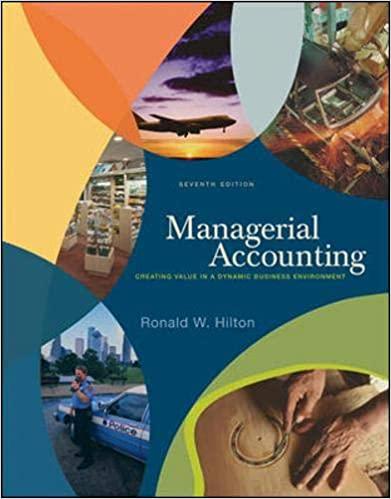Question
Jane Dow recently opened a new car wash in an affluent suburb of a major metropolitan area. Dow decided to cater to the high-priced segment
Jane Dow recently opened a new car wash in an affluent suburb of a major metropolitan area. Dow decided to cater to the high-priced segment of the car-wash market and to try as much as possible to service expensive cars that are highly pampered by their owners. The car wash uses a two-stage wash and cleaning process. In the first stage, cars are washed using state-of-the-art automatic car-wash machines with brushes that are "baby-bumper smooth". The second-stage of the process involves the cleaning of the interior of the cars. The car wash has two automatic car-wash machines, each of which costs $200,000. To be cleaned, a car need only go through one of the machines. Both machines are identical and can process cars in parallel. These machines are fed from a single common waiting line. They are imported from Italy and use extremely fine brushes that are guaranteed not to scratch even the most delicate paint finishes. Each machine requires 130 seconds to wash a car. It also takes an additional 20 seconds for a car to exit the machine while another car simultaneously enters it. This standard is set sufficiently high so that there is comfortable spacing between the two cars. 2 The second stage of the car-wash process, which concentrates on cleaning the car's nterior, is labor intensive and is performed in one of two interior cleaning centers (ICC). Each ICC is staffed by at most three employees. In each ICC the cleaning process for a car requires a total of 6 labor-minutes; that is, this job can be performed by one person in 6 minutes, by two persons in 3 minutes, and so on. (This standard includes the time required to move the car into and out of the ICC.) Dow has found that four or more persons tend to get in each other's way and do not save a proportional amount of time.
a) Draw a process-flow diagram of the car wash service process. (You can use rectangles
to represent the different stages of the process, and inverted triangles to represent the
various kind of inventory (and waiting lines) designed into the process.
b) What is the capacity (i.e. output rate in cars per hour) of each automatic car-wash
machine?
c) What is the cycle time (or throughput) time of the work center corresponding to the
automatic car wash machines?
d) What is the capacity in cars per hour of the work center corresponding to the automatic
car wash machines?
e) If Dow schedules two workers in each ICC, what is the capacity in cars per hour of the
interior cleaning process?
f) What is the bottleneck (or limiting) resource of the car-wash service process?
g) If three workers are assigned to each ICC, which stage is the bottleneck process in this
case?
Step by Step Solution
There are 3 Steps involved in it
Step: 1

Get Instant Access to Expert-Tailored Solutions
See step-by-step solutions with expert insights and AI powered tools for academic success
Step: 2

Step: 3

Ace Your Homework with AI
Get the answers you need in no time with our AI-driven, step-by-step assistance
Get Started


